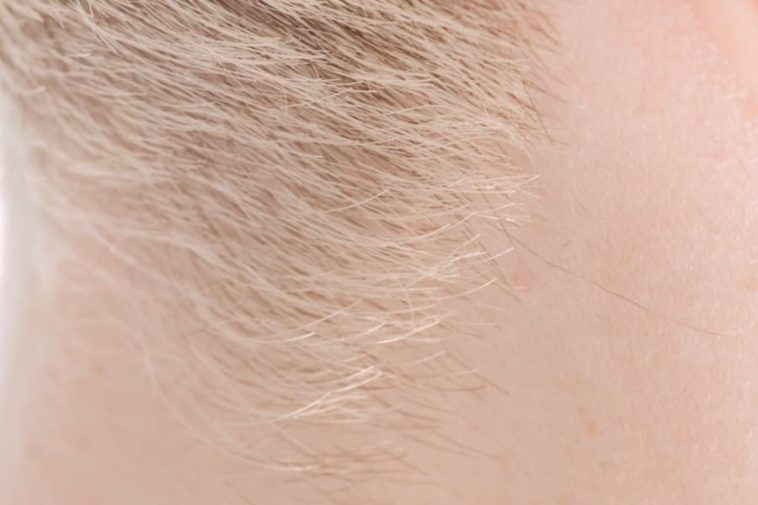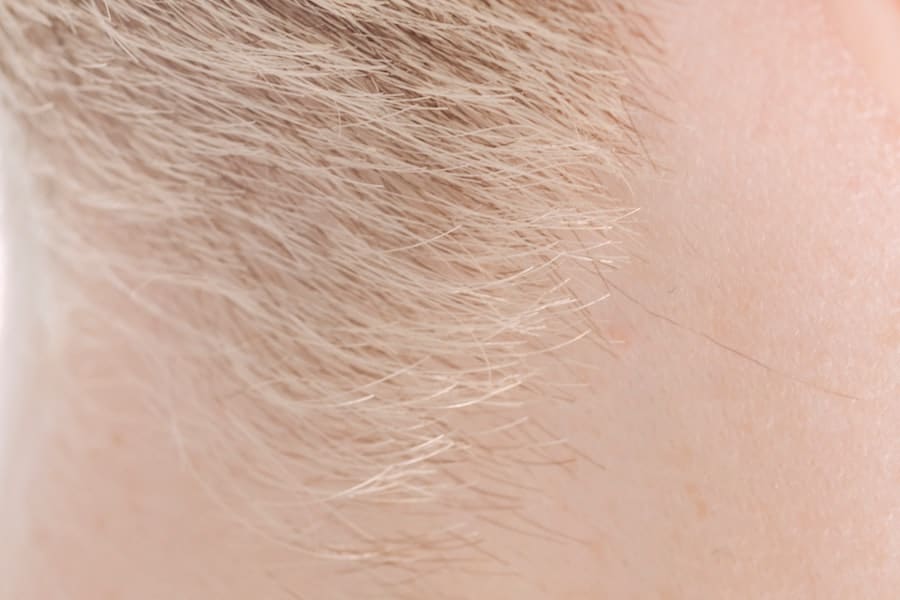In most cases, ingrown hair is nothing to worry about. It happens when a hair curls back into your skin and grows inwards rather than outwards. However, if you are prone to getting ingrown hairs on your legs, the risk of developing an infection or scarring increases. Read on to learn more about these pesky hairs and discover how to get rid of ingrown hair scars. We all have different levels of sensitivity when it comes to our skin. Some of us have naturally oily skin, while others have sensitive skin that’s prone to breakouts and rashes when exposed to certain substances like soaps or perfumes. In some people, even the slightest friction can trigger pimples or other blemishes on the skin. If you are one of those unlucky souls that seem to be plagued by ingrown hairs every time you shave your legs or any other part of your body with fine hair follicles, don’t worry! You aren’t alone!
How To Get Rid Of Ingrown Hair Scars
TCA and Laser Treatments for Ingrown Hair Scars
TCA, short for Trichloroacetic acid, is used in chemical peels to improve skin texture, reduce pigmentation, and fade blemishes. The TCA chemical solution is also commonly used to treat ingrown hairs on the legs. It is applied over the affected area, and the chemical then works to break down the hair root, which allows the hair to be removed more easily. If you want to get rid of ingrown hair scars, you can also visit your dermatologist and ask for laser treatment. Laser hair removal is a process that uses a beam of light to destroy the root of the hair, without affecting the surrounding skin. While it doesn’t work for every skin and hair type, it is a great method for people who want to get rid of ingrown hair scars.
Exfoliation to Get Rid of Ingrown Hairs
Exfoliation is one of the best ways to get rid of ingrown hairs on the legs and many other parts of the body. You can use a scrub, a loofah, or a body brush to gently remove the top layer of dead skin cells that often clog the pores and lead to ingrown hairs. Use clean water to wet your skin and then apply the scrub, loofah, or body brush in a circular motion, starting from the ankle and moving towards your thigh. Exfoliating your skin once a week will help prevent ingrown hairs. Be careful not to scrub too hard, though! You don’t want to irritate the skin and make it even more susceptible to ingrown hairs. If you want to know more about exfoliation, check out our article on how to exfoliate your face.

Bumps and Moles: How to Tell the Difference?
Bumps on the skin are red and swollen while moles are generally the same color as the rest of the skin. Bumps also have a clearly defined edge while moles don’t have any border. Bumps are caused by ingrown hairs, pimples, or ingrown hairs that are a result of shaving. While ingrown hairs are not always harmful, they can sometimes be a symptom of a more severe problem, like an infection or a skin disease. Bumps are generally found on the upper thighs, groin, underarms, and bikini line. The best way to determine what type of bump you have is to visit your dermatologist and get a skin biopsy. Dermatologists can determine the cause of the bump by either excising the bump with a scalpel or taking a small sample and examining it under a microscope.
Exfoliation:
Exfoliating your skin once a week will help prevent ingrown hairs. Be careful not to scrub too hard, though! You don’t want to irritate the skin and make it even more susceptible to ingrown hairs.
Use warm water:
While it is tempting to use hot water in order to open the pores and remove dead skin cells, you should avoid doing it as much as possible. Hot water can cause the hair follicle to contract and push the hair deeper into the skin.
Prevent shaving:
If you shave your legs or other parts of your body frequently, consider giving it up for a while. While shaving is an easy way of removing unwanted hair, it can also lead to ingrown hairs and scars. If you absolutely must shave, try using a sharp razor with a new blade and shave in one direction only. Shaving against the grain can cause minor cuts on your skin that can lead to ingrown hairs and scars if left uncared for.
Change your shaving cream:
If you are suffering from frequent cases of ingrown hairs, try changing the kind of shaving cream that you use on a regular basis so that you don’t get used to one brand in particular! It is best not to shave with any kind of gel or foam that contains alcohol because this can dry out your skin and make it susceptible to infections such as cellulitis or folliculitis. It is best not to use any kind of shaving cream at all!
Use hair removal cream:
If you are prone to ingrown hairs, it is best not to shave at all. Instead, try using a hair removal cream that contains a retinoid or salicylic acid. These ingredients will help prevent your skin from becoming dry and cracked, which can lead to breakouts of ingrown hairs and scars.
Be careful with tweezing:
If you must tweeze your eyebrows or other facial hair, be sure to use clean tweezers and wash them thoroughly before each use. It is also important not to tweeze too often in order to prevent the hair follicles from becoming damaged or infected by bacteria.
Be careful with waxing:
Waxing can be a great way of removing unwanted hair if done properly. However, waxing can sometimes lead to ingrown hairs because the wax dries out the skin and creates small cuts on the surface of the skin that make it easier for bacteria to enter the body through these cuts and cause infections such as cellulitis or folliculitis. Make sure that you always go to a licensed esthetician instead of doing it yourself! Anytime you are considering a new form of hair removal, find out what kind of side effects it may have before trying it out!
Use a depilatory cream:
A depilatory is an easy way of removing unwanted hair without having to deal with razors or waxing. However, be sure to read the ingredients on the label of your depilatory cream before using it. Some of these creams contain alcohol and other chemicals that can dry out your skin and cause ingrown hairs, cellulitis, and folliculitis.
Use a laser hair removal treatment:
Laser hair removal is a popular method of removing hair that is used by millions of people all over the world. However, this treatment can sometimes result in ingrown hairs, cellulitis, and folliculitis if not done properly. It is best to go to a licensed professional for this kind of treatment because they will be able to help you avoid any complications that might arise from this treatment.
Use an epilator:
An epilator is another popular way of removing unwanted hair. Although it works well to remove hair quickly and easily, it can also cause ingrown hairs, cellulitis, and folliculitis if not used properly. Always read the instructions before using your epilator so that you can avoid any complications!
Use electrolysis:
Electrolysis is another way of removing unwanted body hair that has been around for decades but it can be very painful and costly. This method should only be used as a last resort because it involves inserting a needle into each individual hair follicle in order to destroy the root cells that are responsible for causing these hairs to grow back again. This procedure can lead to infections such as cellulitis or folliculitis if not done properly or safely. It is best to go to a licensed professional for this kind of treatment because they will be able to help you avoid any complications that might arise from this treatment.
Get laser treatments:
Laser treatments are the latest trend in hair removal, but they can also lead to a variety of infections if not done properly. This procedure involves using a laser to destroy the root cells of your hair follicles so that they will not grow back again. However, this treatment should only be used as a last resort because it can sometimes result in folliculitis or cellulitis if not done properly. It is best to go to a licensed professional for this kind of treatment because they will be able to help you avoid any complications that might arise from this treatment.
Bottom Line
If you are suffering from ingrown hairs, you don’t have to live with it. There are many ways to get rid of ingrown hairs. Exfoliating your skin once a week will help prevent ingrown hairs. If you want to avoid ingrown hairs on your legs, make sure to shave after taking a warm shower. Always use a clean razor and shaving cream or gel. If you want to avoid ingrown hairs and their accompanying pain and possible infection, it’s best to shave in the direction that the hair grows, using a fresh blade each time. If you’re prone to ingrown hairs, try using an exfoliating scrub to remove dead skin cells and make your skin softer.





